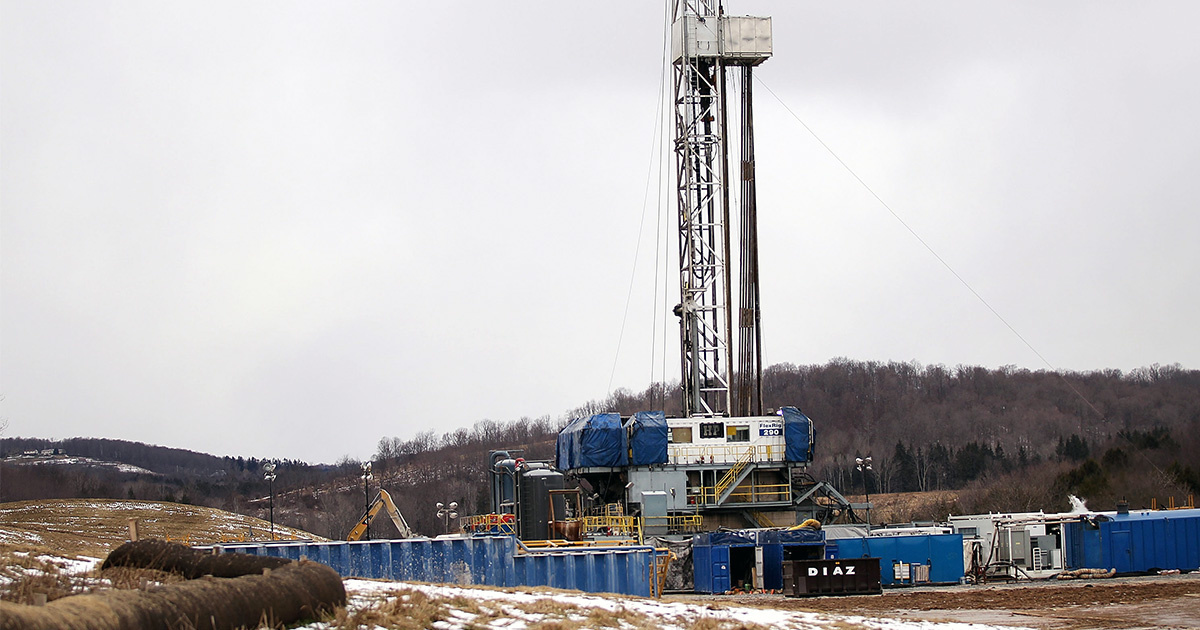
Cabot’s Sneaky Attack on Pennsylvania Cancer Survivor Reveals Dirty Agenda to Silence Environmentalists

By Wenonah Hauter
Cabot Oil & Gas, a company with $765 million in assets in 2017, doesn’t like environmental nonprofits meddling in its dirty business in Pennsylvania. And the company is delivering this message by targeting Ray Kemble—a local 63-year old who just survived his fourth cancer surgery—with a $5 million lawsuit for speaking out about Cabot and fracking.
If corporate injustices were measured on a scale of one to ten, Cabot’s latest disgraceful maneuver would be a rock-solid eleven. Back in 2010, Cabot settled a number of lawsuits brought by Dimock homeowners who claimed that the company had poisoned their groundwater, decreased their property values and threatened their health and safety. Kemble was one of those plaintiffs who signed a settlement agreement that included some unknown nondisclosure terms. It’s a secrecy provision that Cabot often uses to keep its dirty practices hidden and one that state and federal regulators have cited as a hinderance to a full investigation into the impact of fracking on groundwater and public health.
While its exact terms remain concealed, Cabot’s lawyers want us all to take their word for it that Kemble is in violation of the nondisclosure provision of the agreement because he has exercised his First Amendment right to warn others of the risks of fracking and encourage an end to this inherently harmful practice. Kemble’s effective advocacy made him a target of Cabot’s ire, and now they’ve taken aim and fired off a lawsuit that seeks to strip him of all he has left in the world, and then some.
Cabot’s recent filing with the court asked the judge to place a cancer patient with no resources in jail until its lawyers have had a chance to interrogate him. The judge rejected its request and after the hearing, Cabot’s spokesperson tried to deflect from the corporation’s persecution of Kemble by claiming that it is really just using the courts to go after groups that have provided financial support to Kemble and others who have been victimized by Cabot’s irresponsible fracking operations.
The irony of Cabot’s claims is rich. While Cabot whines about advocacy groups supporting affected citizens in their work to stop fracking, its spokesperson didn’t mention the over $600,000 the company paid out in lobbying and campaign contributions between 2011 and 2014 in Pennsylvania in an attempt to cover up the 265 operating violations it racked up over the same period.
Elected officials have happily taken campaign money from Cabot to protect its interests in the state. Food & Water Watch has been proud to stand alongside Kemble and all the other victims of Cabot and other fracking companies in Dimock, across Pennsylvania and around the country. We’ve provided funding so that people in Dimock who have had their drinking water taken from them have access to clean water, and to assist these courageous frontline advocates who have been fighting hard against crooked companies and bought-and-paid-for elected officials who look the other way. And we will continue to do so even in the face of corporate intimidation.
Cabot can only continue to operate by violating the fundamental rights of others. It threatens the property rights of homeowners whose groundwater is poisoned and whose property values plummet. It even relies on judges to overturn juries who grant Cabot’s victims monetary damages for the harm Cabot has caused, while paying off politicians. And now the corporation wants to put an end to people’s rights to speak freely about fracking.
It’s time to put an end to Cabot’s reign of terror in Pennsylvania. The federal Environmental Protection Agency should reopen the investigation into Dimock’s groundwater that it abruptly walked away from without explanation. The state legislature should hold hearings on Cabot’s business and drilling practices and the use of nondisclosure agreements to silence victims. And the state Attorney General Josh Shapiro should launch an investigation into Cabot’s shameless persecution of Kemble and Cabot’s misuse of the court system. It’s time for these officials to step up and protect residents of Pennsylvania from the abuses of greedy and irresponsible oil and gas companies like Cabot.
Fracking Waste Lawsuit Highlights Dangerous Trend of Corporations Targeting Community Rights Defenders https://t.co/UzMqbzinoB #renewable #solar #wind #PV pic.twitter.com/sBsNIoMZF4
— Tom DeRosa (@RenewableSearch) January 18, 2018
Wenonah Hauter is executive director of Food & Water Watch.

 233k
233k  41k
41k  Subscribe
Subscribe 